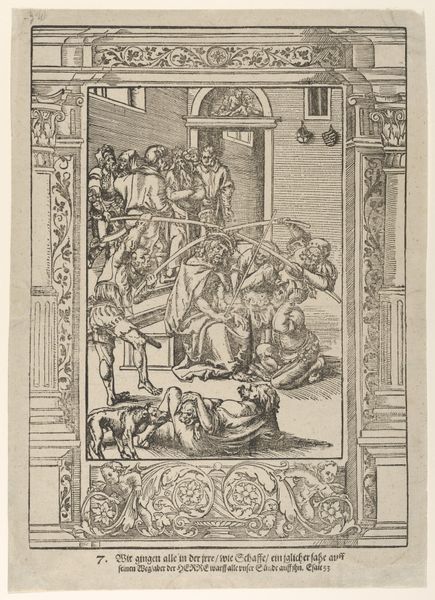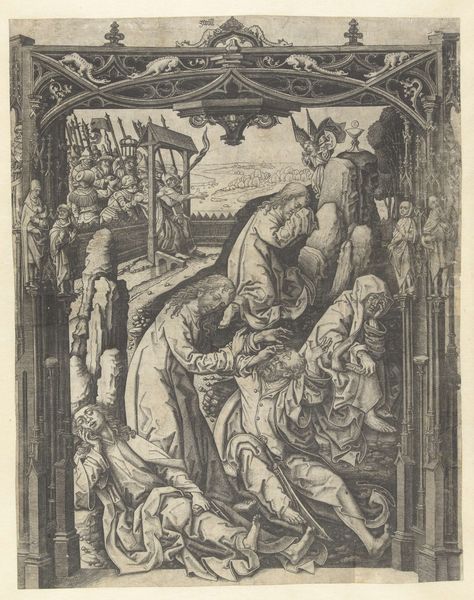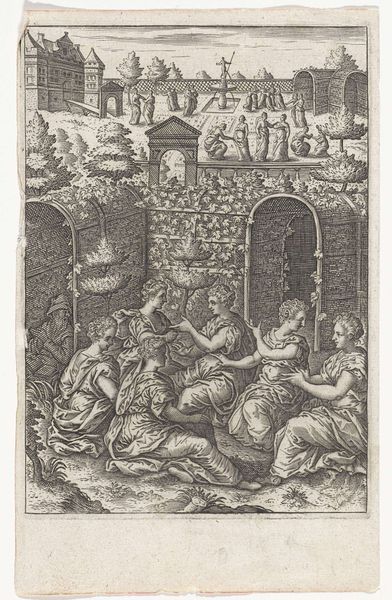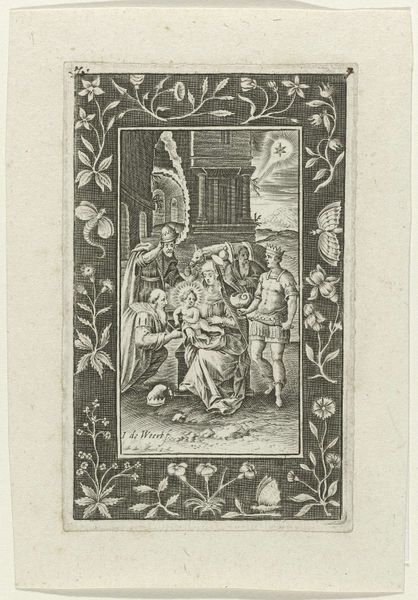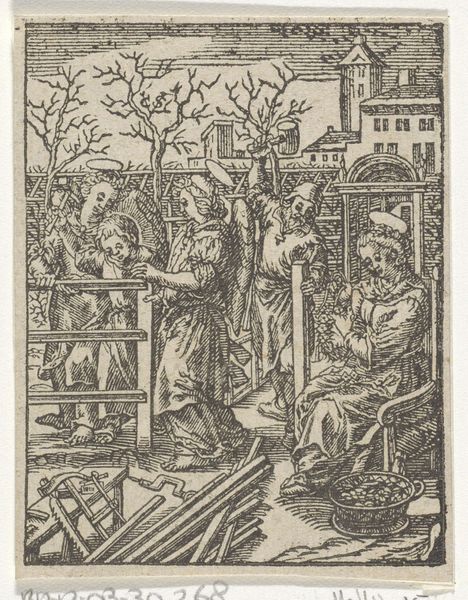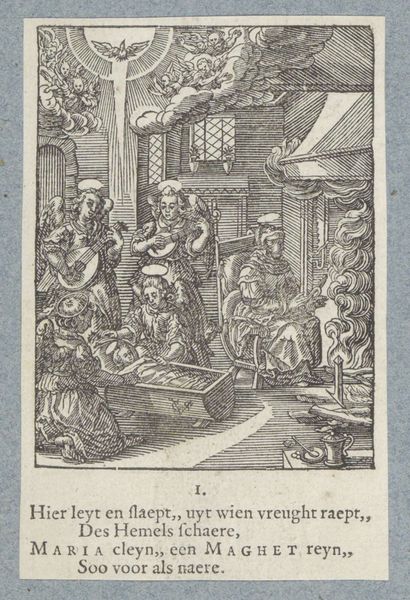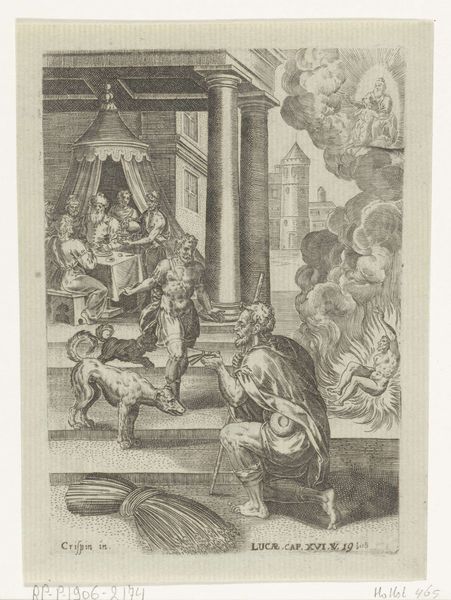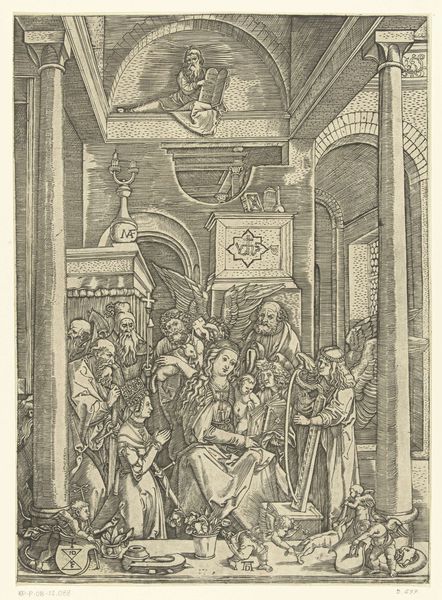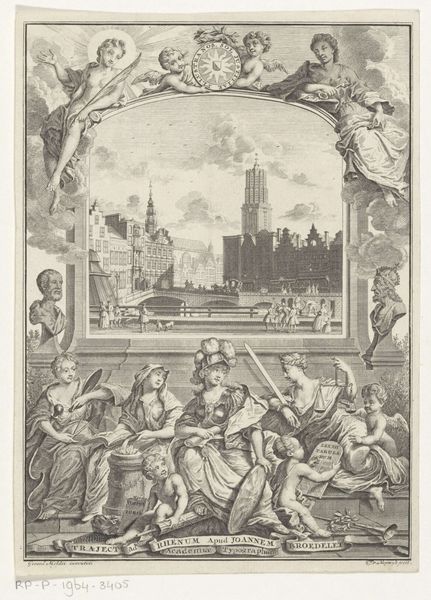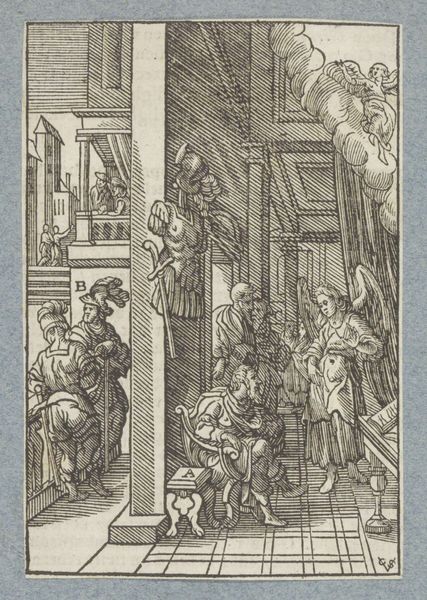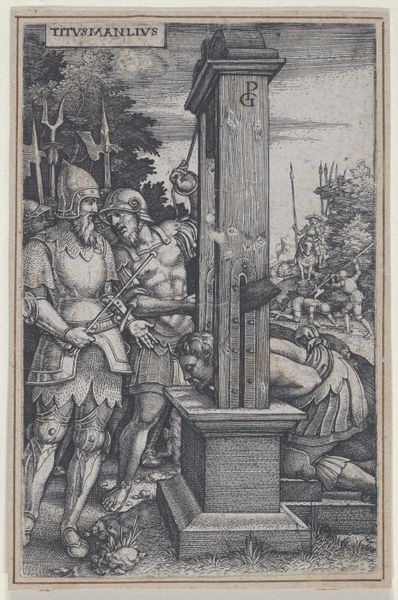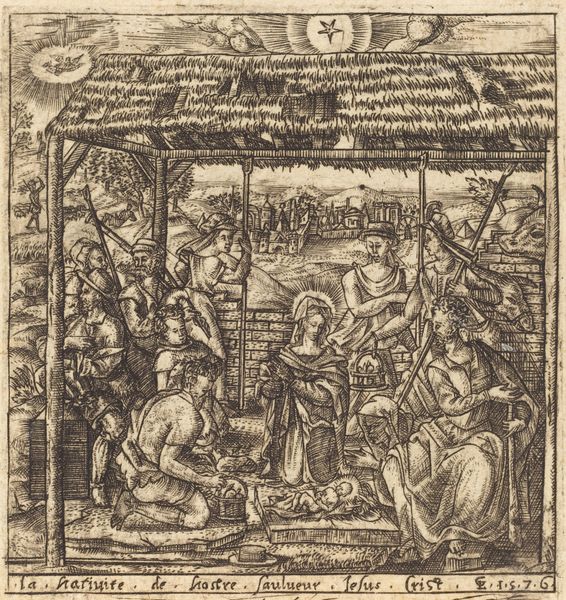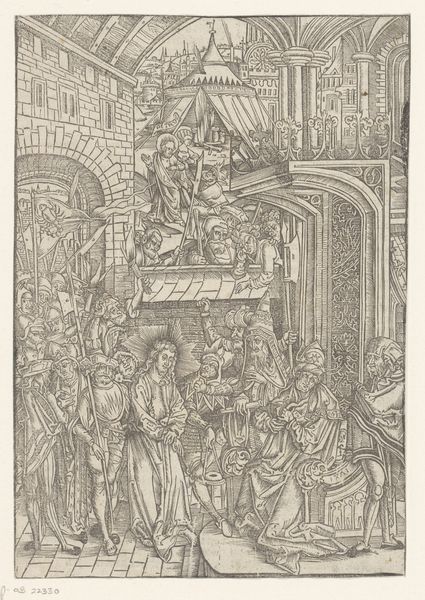
print, engraving
#
baroque
# print
#
landscape
#
figuration
#
line
#
history-painting
#
northern-renaissance
#
engraving
Dimensions: height 154 mm, width 112 mm
Copyright: Rijks Museum: Open Domain
Editor: Here we have "Man vertelt een verhaal," or "Man Telling a Story," an engraving made between 1614 and 1616. What strikes me most is how this tiered arbor dominates the composition. How do you interpret this work, and what significance might that structure hold? Curator: It's a fascinating piece! To understand it, we must consider the context of the early 17th century and the rise of civic humanism. These elaborate gardens weren't just for leisure. The central figure's act of storytelling within this ordered, cultivated space points towards the importance of rhetoric and persuasion in public life. Editor: So the arbor symbolizes… cultivated discourse? Almost a theatrical setting? Curator: Precisely! The engraving highlights how cultivated spaces became stages for demonstrating social power. Note how the figures are posed; does this resemble classical imagery? The Northern Renaissance saw a revival of classical ideals, but also used it for a new elite of wealthy merchants, politicians and lawyers Editor: I see that classical influence now! What I initially perceived as an interesting background detail gains much more importance. Curator: Indeed! These weren’t isolated images, but circulated widely. They promoted a very specific vision of power and sophistication. It’s interesting how art could, back then, define these values. Do you agree? Editor: Definitely! The print served a purpose beyond pure aesthetics; it actively shaped perceptions. It also highlights how our interpretations are constantly shaped by historical understanding. I initially saw the work more abstractly. Curator: And that's the beauty of studying art. It's a constant dialogue between the artwork, its context, and ourselves. We began from aesthetics but saw how history influences the making, reception and function of the artwork.
Comments
No comments
Be the first to comment and join the conversation on the ultimate creative platform.
